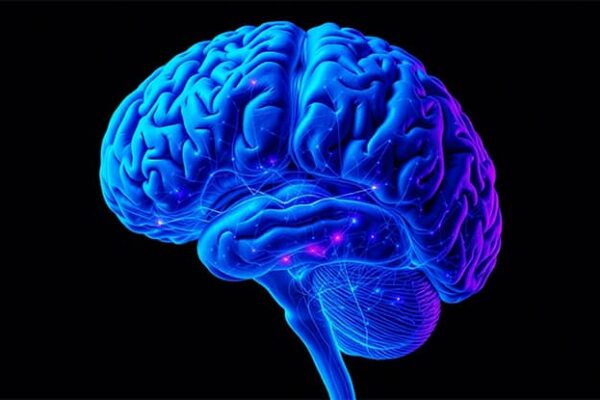ADHD in adults is a neurological and behavioral disorder characterized by difficulties with attention, impulsivity, and, in some cases, hyperactivity. It is often diagnosed in childhood but can persist or be diagnosed in adulthood as well.
The prevalence of ADHD (Attention Deficit Hyperactivity Disorder) among adults can vary significantly depending on the geographical region, research methodology, and diagnostic criteria. However, according to many studies, approximately 2.5% to 5% of the adult population globally suffers from ADHD.
This condition is often underestimated and underdiagnosed in adults, as many individuals with ADHD do not seek medical help or are unaware that their difficulties are related to this disorder. Adults with ADHD often face various life challenges, such as problems at work, in education, and in personal and social relationships, which can lead to misattributing their issues to other causes.
Moreover, adults diagnosed with ADHD in childhood may continue to experience related symptoms, which often change with age. In adults, they may be less obvious or manifest differently, such as in difficulties with self-organization and time management, rather than traditional childhood hyperactivity.
It is worth noting that increased awareness and accessibility of diagnostic services may lead to a rise in diagnosed cases of ADHD among adults in the future.

Differences between ADHD in Adults and Children
ADHD in adults and children shares similar core characteristics, but there are important differences in how the disorder manifests and affects various age groups:
1. Symptom Manifestation
- Children. Symptoms often include hyperactivity. This can manifest as excessive movement, an inability to sit still for long periods, frequent interruptions, and impulsive actions.
- Adults. Hyperactivity usually decreases, and issues with organization, time management, self-discipline, and attention focus become more prominent.
2. Impact on Daily Life
- Children. ADHD may lead to difficulties in school, such as problems with completing homework or interacting with classmates and teachers.
- Adults. ADHD can affect work, personal relationships, and overall daily task management, often leading to stress, anxiety, and relationship problems.
3. Diagnosis
- Children. ADHD diagnosis typically occurs during school age when symptoms become more noticeable in an educational environment.
- Adults. ADHD diagnosis in adults is often more complicated, as symptoms may be misattributed to other conditions or stress, and many adults may not realize that their difficulties are linked to ADHD.
4. Comorbid Conditions
- Children. In children, ADHD is often accompanied by other disorders, such as mood disorders, anxiety disorders, and conduct disorders.
- Adults. Adults with ADHD may also have comorbid mental health conditions, but they are more likely to include depression, anxiety, and substance dependencies.
5. Treatment and Management
- Children. Treatment often includes behavioral therapy, educational interventions, and, in some cases, medication.
- Adults. Treatment typically involves a combination of medication, cognitive-behavioral therapy, and self-help strategies aimed at managing the specific challenges of adult life.
Understanding these differences is crucial for the effective diagnosis and treatment of ADHD across different age groups.

Causes of ADHD in Adults
ADHD in adults is a complex condition that lies at the intersection of neurology and psychology, and its exact causes are still the subject of much research. Over the past decades, scientists have made significant progress in better understanding the factors that contribute to the development of this disorder. Adults diagnosed with ADHD often wonder where the condition originated and what might have triggered its symptoms in later life.
The widespread belief that ADHD is solely a childhood disorder has long been debunked. However, despite the growing recognition of ADHD in adults, many aspects of the condition remain unknown. In particular, the reasons why some people continue to experience ADHD symptoms in adulthood, while others see them diminish or disappear, are still under scientific investigation.
Modern research suggests that ADHD in adults can have multiple causes, including genetic, biological, and environmental factors. This is a multifactorial disorder, where each element plays a role in the development and manifestation of symptoms. Studying these causes not only helps to better understand the nature of ADHD but also opens doors to developing more effective treatment methods and support for those suffering from this disorder.
Genetic Factors
Genetic factors play a significant role in the development of ADHD in adults. Accumulated research data indicate that ADHD has a strong hereditary component, and the risk of developing this condition increases if close relatives have experienced similar disorders.
Genetic studies on ADHD have revealed that certain genetic variations are associated with an increased risk of developing the disorder. For example, some genes related to the brain’s dopaminergic system, which plays a key role in regulating attention and behavior, are often linked to ADHD. Specifically, variations in genes coding for dopamine receptors and transporters may contribute to the development of ADHD.
Additionally, other genetic factors may potentially influence the development of ADHD. For instance, studies suggest a possible link between attention deficit hyperactivity disorder and genes responsible for the functioning of the brain’s norepinephrine and serotonin systems. These neurotransmitters also play an important role in regulating mood, attention, and behavior.
However, it is important to note that having a genetic predisposition does not guarantee a 100% likelihood of developing ADHD. Genetic factors interact with the environment and other conditions, which together may lead to the manifestation or absence of the disorder’s symptoms. This is a multifactorial disorder, and its manifestation depends on a complex combination of various factors, including genetic, biological, and environmental.
Environmental and Upbringing Influences
The environment and upbringing also play a significant role in the development and manifestation of ADHD in adults. While genetic factors are important, their interaction with certain environmental conditions and aspects of upbringing can either exacerbate or mitigate ADHD symptoms.
Environmental Influences
- Early life stresses. Traumatic events or chronic stress during childhood can increase the risk of developing ADHD. This includes family conflicts, parental divorce, or unfavorable upbringing conditions.
- Toxic substances. Exposure to certain toxins and chemicals, such as lead and other environmental pollutants, especially at an early age, can increase the risk of ADHD.
- Premature birth. Studies show that premature babies or those with low birth weight may be more prone to developing ADHD.
Upbringing Influences
- Parenting methods. Some parenting styles, especially those involving high levels of strictness or, conversely, a lack of structure and consistency, can contribute to the development or exacerbation of ADHD symptoms.
- Educational environment. School experiences, including the attitudes of teachers and peers, as well as educational methods, can influence the development and management of ADHD.
- Family dynamics. Family relationships and dynamics can significantly impact a child’s development. For example, support and understanding from family members can help manage ADHD symptoms.
It is important to note that none of these factors alone directly causes ADHD, but their interaction with genetic predispositions can increase the risk of developing the disorder.
Psychological and Neurobiological Aspects
The psychological and neurobiological aspects of ADHD in adults represent a complex interplay of factors influencing the development and manifestation of this disorder. Scientific research in these areas helps better understand how the brain of individuals with ADHD functions and what psychological processes affect their behavior and perception.
Neurobiological Aspects
- Structural and functional changes in the brain. People with ADHD exhibit certain changes in brain structure and functioning. This can include differences in the size and activity of certain brain areas, particularly those responsible for attention, planning, and inhibition of reactions.
- Imbalance in neurotransmitter systems. ADHD is associated with an imbalance of certain neurotransmitters, particularly dopamine and norepinephrine, which play key roles in regulating attention, motivation, and emotional responses.
- Disruption of brain connections. Studies show that people with ADHD may have altered connectivity between different brain areas, affecting their ability to coordinate and integrate information.
Psychological Aspects
- Cognitive features. Adults with ADHD often demonstrate certain cognitive features, such as difficulty maintaining attention, impulsivity, problems with working memory, and executive functions.
- Emotional regulation. ADHD is often accompanied by problems in emotional regulation, which can lead to quick and intense emotional reactions and difficulties managing stress and frustration.
- Self-perception and social interaction. ADHD can affect self-esteem and overall self-perception, as well as the ability to interact effectively in social situations due to attention difficulties and impulsivity.
Understanding these psychological and neurobiological aspects is essential for developing effective approaches to treating and managing ADHD in adults. It allows for individualized strategies tailored to each person’s specific needs and provides a comprehensive approach to improving their quality of life.

Symptoms and Diagnosis
ADHD in adults often goes unnoticed or is misdiagnosed, as its symptoms can differ significantly from those typically associated with children. Adults with ADHD face a unique set of challenges that can be masked by stress, fatigue, or other daily life difficulties. These features make diagnosing ADHD in adults a complex task for both healthcare professionals and patients themselves.
Typical symptoms that may indicate ADHD include difficulties with concentration, forgetfulness, impulsivity, and problems with self-organization. However, it’s important to understand that these symptoms can manifest differently in different people. Some adults may experience more difficulties with attention, while others may encounter more pronounced impulsivity or emotional problems.
Diagnosing ADHD in adults requires careful consideration of the person’s life history, current symptoms, and the potential influence of other medical or psychological conditions. The diagnostic process typically includes an extensive clinical examination, history taking, and may involve psychological testing. This comprehensive approach helps ensure diagnostic accuracy and the selection of appropriate treatment.
Main Symptoms of ADHD in Adults
The main symptoms of ADHD in adults can manifest in various forms, and their intensity varies from person to person. The most common symptoms include:
- Problems with concentration and attention. Adults with ADHD often find it difficult to concentrate on tasks, especially boring or monotonous ones. They are easily distracted and have problems organizing their activities.
- Impulsivity. This may include acting without considering consequences, interrupting conversations, or difficulties with self-control.
- Hyperactivity. Although less common in adults compared to children, some adults with ADHD may experience internal or external restlessness, expressed in continuous movement or excessive talkativeness.
- Emotional problems. Adults with ADHD often face low self-esteem, stress, anxiety, and may be more prone to depression.
- Time management issues. Difficulties with planning, prioritization, and meeting deadlines are common for adults with ADHD.
- Forgetfulness. Regularly forgetting appointments, promises, deadlines, or daily responsibilities is a frequent issue.
- Difficulties in interpersonal relationships. Problems with attention, impulsivity, and hyperactivity can cause tension in relationships and social interactions.
These symptoms can seriously affect work, study, personal relationships, and overall quality of life. It’s important to note that diagnosing ADHD in an adult requires a thorough examination and evaluation by a healthcare professional.
Diagnostic Process: Criteria and Methods
The process of diagnosing ADHD in adults involves several stages and uses a comprehensive approach to accurately identify the disorder. Diagnosing ADHD in adults can be more challenging than in children, as symptoms often overlap with other psychological conditions and life circumstances.
Diagnostic Criteria
- History of symptoms. The presence of ADHD symptoms, such as attention problems, impulsivity, and hyperactivity, starting from childhood. The symptoms should be consistent and long-lasting.
- Impact on different areas of life. ADHD symptoms must have a significant impact on social, academic, or professional life.
- Absence of alternative diagnoses. Exclusion of other medical or psychological conditions that could mimic ADHD symptoms.
Diagnostic Methods
- Clinical history. Doctors and psychologists collect detailed medical, psychological, and educational history, including symptoms and their impact on the person’s life.
- Self-assessment scales and questionnaires. Used to assess the severity of ADHD symptoms. These tools may include questions about attention, organization, impulsivity, and emotional stability.
- Psychological testing. May include cognitive tests to assess attention, executive functions, and other cognitive abilities.
- Physical examination. Necessary to rule out other medical problems that could cause symptoms similar to ADHD.
- Discussion with relatives or partners. Sometimes doctors may contact close ones for additional information about the patient’s behavior and its changes.
It is important to note that diagnosing ADHD in adults takes time and may involve consultations with several specialists. Understanding that ADHD is a multifaceted disorder helps specialists approach diagnosis comprehensively, taking all possible influencing factors into account.
Common Misconceptions and Diagnostic Errors
There are several common misconceptions and errors in diagnosing ADHD in adults, which can lead to misdiagnosis or its omission:
- ADHD is only a childhood disorder. One of the most common misconceptions is that ADHD is solely a childhood disease. Many do not realize that ADHD can persist into adulthood.
- Underestimating its impact on adults. ADHD in adults is often underestimated in terms of its impact on daily life, including work, study, and personal relationships.
- Confusion with other disorders. Symptoms such as forgetfulness and low attention span are often confused with other disorders: depression, anxiety, or even personality disorders.
- Undiagnosed ADHD in childhood. It is often assumed that if a person was not diagnosed with ADHD in childhood, they cannot have it as an adult. However, many adults have undiagnosed ADHD.
- Stereotypes about hyperactivity. Hyperactivity is only one aspect of ADHD, and its absence does not rule out the disorder. In adults, ADHD often manifests as internal restlessness or emotional instability.
- Neglecting gender differences. ADHD symptoms in women may present differently than in men and often go unrecognized due to gender stereotypes in the perception of the disorder.
- Attributing symptoms to personality traits. For example, forgetfulness or disorganization may be perceived as laziness or carelessness rather than part of the clinical picture of ADHD.
- Insufficient comprehensive diagnosis. Sometimes diagnosis is based solely on self-reported symptoms, instead of a comprehensive approach that includes medical history, psychological testing, and discussion of family history.

Impact of ADHD on Adult Life
ADHD in adults is not just a set of symptoms limited to difficulties with concentration or impulsive behavior. This condition has a profound impact on many aspects of a person’s life, from professional activities to personal relationships. The features of this disorder not only cause specific problems in daily activities but also significantly affect self-esteem and emotional well-being.
Adults with ADHD often face unique challenges that are frequently misunderstood by others. Issues with organization, planning, and completing tasks on time can create obstacles in both work and personal life. In addition, difficulties with managing attention can impact the ability to retain and process information, which is especially important in a fast-changing world.
However, the impact of ADHD is not limited to work-related aspects of life. This disorder can also affect personal relationships, leading to misunderstandings and conflicts with partners, friends, and family. Communication difficulties and maintaining long-term relationships may result from impulsive reactions or attention problems characteristic of ADHD.
Professional Life and Career
ADHD in adults can have a noticeable impact on professional life and career, sometimes creating not only unique challenges but also opportunities. Here are some key aspects of how ADHD affects work and career:
- Problems with organization and time management. Adults with ADHD may struggle with planning, deadlines, and task management, often leading to problems with meeting work deadlines.
- Difficulties with concentration. Jobs requiring prolonged attention to detail or monotonous activities can be particularly challenging for individuals with ADHD.
- Impulsivity and decision-making. Impulsivity may lead to spontaneous decisions without sufficient analysis or planning.
- Interpersonal interactions. ADHD can affect communication skills, causing misunderstandings or conflicts with colleagues and management.
- Stress and productivity. Managing stress can be a challenging task, and adults with ADHD may quickly feel tired or overwhelmed at work.
- Adaptability and creativity. On the other hand, many adults with ADHD have a high degree of adaptability, flexibility in thinking, and creative problem solving, which can be a valuable asset.
- Career growth and development. ADHD can impact career growth due to difficulties in adhering to organizational norms and advancing up the career ladder.
- Career choices. People with ADHD perform best in a dynamic, flexible environment that requires creativity and quick decision making.
For many adults with ADHD, the key to success in the workplace is finding the right balance between using their unique skills and developing strategies to cope with the challenges associated with the disorder. This may include using organizational tools, seeking support from coworkers and management, and using stress management techniques.
Personal Relationships and Social Interactions
ADHD in adults can significantly impact personal relationships and social interactions, sometimes creating challenges but also providing opportunities for deep self-awareness and communication skill development. Here are some ways in which this influence manifests:
- Communication difficulties. Adults with ADHD may struggle to maintain attention during conversations, which sometimes leads to misunderstandings and the perception that they are not listening to the other person.
- Impulsivity in communication. Impulsive behavior, such as interrupting others or making spontaneous decisions, can create tension in relationships and social interactions.
- Emotional sensitivity. Adults with ADHD can be more sensitive to criticism or rejection, which may lead to conflicts or misunderstandings in relationships.
- Problems with organization and planning. Difficulties with organization and keeping to schedules can affect personal relationships, for example, when forgetting important dates or meetings.
- Challenges in long-term relationships. Some adults with ADHD find it hard to maintain long-term relationships due to constant changes in mood and behavior.
- Social adaptation. Finding and maintaining social connections can be challenging, especially in new or unstructured social situations.
- Positive aspects. Despite the challenges, many adults with ADHD have unique qualities, such as a creative approach, the ability to think outside the box, and deep empathy, which can enrich personal relationships.
- Working on relationships. It is important for adults with ADHD to recognize the impact of their condition on interpersonal relationships and actively work on developing communication skills, self-regulation, and mutual understanding.
Being able to manage ADHD symptoms effectively and being open with loved ones about their traits and needs can greatly improve the quality and depth of personal relationships and social interactions.
Emotional and Psychological Well-Being
The emotional and psychological well-being of adults with ADHD is often affected by their condition, which can lead to additional challenges. People with ADHD may experience heightened levels of stress and anxiety as they constantly face difficulties in managing daily tasks and social interactions. These feelings can be exacerbated by problems with concentration, organization, and maintaining order in life.
Often, adults with ADHD suffer from low self-esteem, especially if they have long been misunderstood or criticized by others because of their symptoms. This can lead to feelings of inadequacy and frustration with their abilities. People with ADHD also frequently experience emotional instability, which manifests in rapid and intense mood changes.
It is important to note that ADHD in adults can be associated with other psychological disorders, such as depression and anxiety disorders. Due to accumulated stress and chronic feelings of inadequacy, adults with ADHD may be at a higher risk of developing these conditions.
However, appropriate treatment and support, including medication, psychotherapy, and self-help strategies, can significantly improve the emotional and psychological state of adults with attention deficit hyperactivity disorder. Learning stress management skills, building self-confidence, and creating a supportive social network play a key role in enhancing quality of life.

Treatment of ADHD in Adults
The treatment of ADHD in adults requires a comprehensive and individualized approach that considers the unique needs of each person. This disorder, which affects many aspects of life—from daily functioning to interpersonal relationships—demands a carefully thought-out strategy that includes both medical and behavioral interventions.
Modern methods of treating ADHD are not limited to medication, although it plays an important role in managing symptoms. Key elements also include psychotherapy, training in self-regulation skills, and the development of strategies to help cope with daily tasks and improve quality of life. The importance of self-awareness and self-help in managing ADHD cannot be underestimated, as they help adults better understand their traits and find ways to adapt to various life situations.
Medication: Drugs and Their Effectiveness
Medication is one of the key components of a comprehensive approach to treating ADHD. It aims to reduce the core symptoms of the disorder, such as attention problems, impulsivity, and, in some cases, hyperactivity. Here are the main categories of drugs used in the treatment of attention deficit hyperactivity disorder in adults:
- Central Nervous System Stimulants. This is the most common type of medication for ADHD. Drugs such as methylphenidate (Ritalin, Concerta) and amphetamines (Adderall, Vyvanse) increase dopamine and norepinephrine levels in the brain, helping to improve attention and reduce impulsivity and hyperactivity. These medications can be very effective but have potential side effects, including insomnia, decreased appetite, increased blood pressure, and more.
- Stabilizers. These drugs, such as atomoxetine (Strattera) and guanfacine (Intuniv), can be used as an alternative to stimulants, especially if the latter cause undesirable side effects or prove ineffective. Stabilizers act more slowly than stimulants but can provide more stable symptom improvement.
- Antidepressants. In some cases, especially when ADHD is accompanied by depression or anxiety disorders, antidepressants may be prescribed. Examples include bupropion (Wellbutrin) and tricyclic antidepressants. They help manage co-occurring symptoms but are usually not used as a primary treatment for ADHD.
The effects of medication can vary significantly from person to person, and finding the right drug may require time and patience. It is important to work closely with a healthcare provider to monitor the effects of the medications and their potential side effects, as well as to regularly assess the necessity and effectiveness of the treatment. In some cases, adjustments in dosage or a change of medication may be needed to achieve the best results.
Psychotherapy and Behavioral Strategies
Psychotherapy and behavioral strategies play a crucial role in the treatment and management of ADHD in adults. These approaches focus on changing behavior, improving self-regulation skills, and teaching strategies to cope with symptoms. Here are some key types of psychotherapy and behavioral strategies:
- Cognitive Behavioral Therapy (CBT) is one of the most effective forms of psychotherapy for adults with ADHD. CBT helps identify and change destructive thought patterns and behaviors, teaching more effective ways to accomplish tasks and cope with stress.
- Training in Organization and Planning Skills. This helps develop time management skills, task organization, and prioritization, which is especially important for adults with ADHD.
- Stress Management Training. This includes relaxation techniques, meditation, and mindfulness practices that help reduce stress and improve emotional well-being.
- Behavioral Skills Training. Focuses on developing specific behavioral strategies to improve daily functioning and manage ADHD symptoms.
- Family Therapy is beneficial for improving communication and understanding among family members, which can help reduce home conflicts and strengthen support from loved ones.
- Group Therapy provides an opportunity for learning and support in a group of people facing similar challenges. Group therapy helps participants feel less isolated with their difficulties.
The application of these psychotherapeutic and behavioral strategies helps adults with ADHD improve their quality of life, enhance self-control, and effectively manage their symptoms. It also fosters the development of healthier coping strategies for everyday challenges and personal growth.
Self-Help and Lifestyle Changes
Self-help and lifestyle changes can significantly aid in managing ADHD symptoms in adults. These approaches aim to strengthen personal resources and develop habits that promote better self-control and overall well-being. Key aspects of self-help include:
- Regular Physical Exercise. Physical activity improves mood, reduces stress and anxiety, and enhances attention and cognitive functions.
- Healthy Diet. A balanced diet rich in omega-3 fatty acids, whole grains, fresh fruits, and vegetables positively impacts brain function and overall well-being.
- Adequate Quality Sleep is critically important for managing ADHD symptoms, as lack of sleep can exacerbate inattention and impulsivity.
- Meditation and Relaxation Techniques. Mindfulness practices and meditation help manage stress, improve focus, and teach ways to cope with negative thoughts.
- Structuring and Organization. Creating a clear daily routine, using planners, and time management apps helps in organizing tasks and meeting deadlines.
- Learning and Applying Self-Help Strategies. Books, online resources, and training programs can provide useful knowledge and tools for self-managing symptoms.
- Social Support. Communicating with friends and family, participating in support groups, or online communities alleviates loneliness, providing emotional support and understanding.
- Positive Thinking and Attitudes. Working on a positive perception of oneself and one’s abilities helps cope with the negative self-image often accompanying ADHD.

Adaptation and Self-Management Strategies
Living with ADHD in adults is a constant process of adaptation and self-management, requiring a mindful approach to daily tasks and challenges. Therefore, they often seek strategies and techniques that help them cope with daily responsibilities, improve attention and concentration, and manage impulsive behavior.
Understanding their strengths and weaknesses, as well as developing personalized adaptation and self-management strategies, allows adults with ADHD to more effectively face the challenges presented by Attention Deficit Hyperactivity Disorder. This requires not only awareness of their condition but also a willingness to continuously learn and adapt, which is key to successfully managing ADHD symptoms in the long term.
Time Management Techniques and Task Organization
Developing effective time management techniques and properly organizing tasks help avoid the chaos and disorganization that often accompany ADHD in adults. Here are some techniques that can be helpful:
- Creating task lists. Lists help visualize and prioritize tasks, providing a clear structure for the day.
- Using planners and calendars. Electronic or paper planners and calendars help track important deadlines, meetings, and events.
- Pomodoro Technique. This method involves working in short intervals (usually 25 minutes), followed by short breaks. This helps maintain focus and prevent fatigue.
- Two-Minute Rule. If a task can be completed in two minutes or less, it’s better to do it immediately to avoid accumulating small tasks.
- Minimizing distractions. Creating a workspace free from distractions helps improve focus.
- Setting realistic goals. Breaking larger tasks into smaller, manageable parts helps reduce the feeling of being overwhelmed.
- Regularly reviewing plans. Regularly reassessing and adjusting plans and goals helps stay on track and avoid confusion.
- Visualizing tasks. Using bulletin boards or visual planning tools helps organize thoughts and tasks.
Applying these techniques not only enables effective time and task management but also contributes to improving overall well-being and reducing stress associated with ADHD. It’s important to experiment with various methods and find those that best suit individual needs and lifestyle.
Improving Concentration and Attention
For adults with ADHD, improving concentration and attention is a key aspect of managing symptoms. Implementing certain strategies and techniques can help develop and strengthen these skills:
- Breaking tasks into small steps. Working on large tasks can be daunting. Breaking them into smaller, manageable parts helps focus and improve attention.
- Regular breaks. Short breaks during work help prevent mental fatigue and maintain concentration levels.
- Focusing on one task. Avoiding multitasking and concentrating on one task at a time helps improve work quality and reduces stress.
- Relaxation and meditation techniques. Mindfulness practices and meditation enhance attention management and relieve distracting thoughts.
- Physical activity. Regular exercise improves overall mental health and contributes to better concentration.
- Healthy sleep. Quality and sufficient sleep are crucial for maintaining mental clarity and attention.
- Stress management. Reducing stress levels through relaxation techniques, hobbies, or social interactions helps improve concentration.
- Organized workspace. A clean and orderly workspace reduces distractions and helps focus on tasks.
- Healthy diet, rich in omega-3 fatty acids and low in sugar, enhances cognitive functions.
Applying these strategies takes time and patience, as well as a willingness to experiment and adapt approaches according to individual characteristics and needs. Regular application of these techniques will significantly improve concentration and attention in adults with ADHD.
Ways to Reduce Stress and Anxiety
Reducing stress and anxiety is particularly important for adults with ADHD, as these emotional states can exacerbate the symptoms of the disorder. Here are several effective ways that can help:
- Physical exercises. Regular activities, such as running, swimming, yoga, or even just a brisk walk, can significantly reduce levels of anxiety and stress.
- Relaxation techniques. Relaxation practices, including breathing exercises, progressive muscle relaxation, or meditation, help calm the mind and body.
- Sleep schedule. Sufficient and quality sleep is critically important for managing stress and anxiety.
- Healthy diet. A balanced diet with adequate omega-3 fatty acids, magnesium, and B vitamins helps reduce stress levels.
- Limiting caffeine and alcohol. Reducing caffeine and alcohol intake can help decrease anxiety and improve sleep quality.
- Mindfulness practices help stay present in the moment and reduce worries about the future.
- Hobbies and creative activities. Engaging in a favorite hobby or creative activities is an effective way to reduce stress.
- Keeping a journal. Writing down thoughts and feelings in a journal helps clarify them and reduce tension.
- Social support. Communicating with friends and family provides emotional support and reduces feelings of isolation.
- Psychotherapy. Working with a psychologist helps address the root of problems related to stress and anxiety and develop effective coping strategies.

Success Stories of People with ADHD
Specific success stories of people with ADHD demonstrate how they overcame challenges and achieved significant success in various fields. Here are a few examples:
- Richard Branson, founder of the Virgin Group, is known for his ADHD. He often speaks about how his ability to think outside the box and take risks helped him build his business empire.
- Simone Biles, Olympic champion gymnast, openly discusses her ADHD. Her ability to focus on training and competitions, despite challenges, makes her an inspiring example for many.
- Adam Levine, lead singer of Maroon 5 and judge on “The Voice,” actively shares his life experiences with ADHD. He uses his platform to raise awareness about the disorder.
- Tyra Banks, a renowned model and host of “America’s Next Top Model,” has talked about her ADHD and how it impacts her career and daily life.
- David Neeleman, founder of three different airlines, including JetBlue and Azul Airlines, is one of the successful entrepreneurs who faced challenges related to ADHD and dyslexia. Despite difficulties with standardized testing in school, he focused on his strengths, such as creative problem-solving. Neeleman emphasized his creative thinking, which allowed him to view problems from a unique perspective and find solutions. Today, he is one of the most successful leaders in the aviation industry.
These stories demonstrate that despite the obstacles associated with ADHD, with the right approach, support, and strategies, significant success can be achieved in various fields.
Case Analyses and Their Solutions
Analyzing real cases of people with ADHD and the solutions they applied helps understand how they cope with the disorder and overcome related difficulties. Here are a few examples:
1. Organizational Problems at Work
- Situation. A person with ADHD struggles to meet deadlines and organize work tasks.
- Solution. Using a daily planner to structure tasks, setting reminders on their phone, and employing the Pomodoro technique to improve focus.
2. Impulsive Behavior and Interpersonal Conflicts
- Situation. An adult with ADHD often gets into conflicts due to impulsive remarks.
- Solution. Working with a therapist to develop self-control skills, using breathing techniques to reduce stress, and learning assertive communication techniques.
3. Forgetfulness and Missing Important Details
- Situation. A person constantly forgets important information and deadlines.
- Solution. Utilizing note-taking apps, setting alarms, and creating routine checks for daily tasks.
4. Difficulty Concentrating While Studying
- Situation. A student with ADHD cannot concentrate on studying.
- Solution. Studying in a quiet and organized space, breaking the study process into small parts, and using audiovisual materials to enhance comprehension.
5. Excessive Worry and Stress
- Situation. An adult with ADHD suffers from heightened stress and anxiety.
- Solution. Regular yoga and meditation, keeping a gratitude journal, and participating in support groups.
These examples show that there are various effective strategies and tools for managing ADHD symptoms and improving quality of life.

Conclusion
The prospects for the treatment and understanding of ADHD in adults highlight significant advancements and opportunities for future research. In recent years, the understanding of Attention Deficit Hyperactivity Disorder as a multifactorial disorder affecting adults just as much as children has improved. New strategies for medication and psychotherapy have been developed, as well as behavioral methods and self-help approaches for effectively managing symptoms.
Prospects also include further research into the genetic and neurobiological foundations of ADHD, developing more personalized treatment approaches, and emphasizing integrative methods that combine pharmacotherapy, psychotherapy, and lifestyle changes. Additionally, raising awareness about this disorder among the public and healthcare professionals is crucial for improving diagnosis and support for adults with ADHD.
Treating ADHD in adults is a journey that requires patience, awareness, and an active approach. It is important to remember that each person is unique, and what works for one may not suit another. Experimenting with various strategies and methods, whether through medication, psychotherapy, or lifestyle changes, will help find the most effective way to manage Attention Deficit Hyperactivity Disorder. Support from loved ones, communicating with others facing similar challenges, and being open to professional help also play key roles in successfully managing this condition.

Information Resources
Here are some recommended books by recognized authors about ADHD in adults:
- “Driven to Distraction: Recognizing and Coping with Attention Deficit Disorder from Childhood Through Adulthood” – by Edward Hallowell and John Ratey. This book is considered a classic in understanding ADHD.
- “You Mean I’m Not Lazy, Stupid or Crazy?!” – by Kate Kelly and Peggy Ramundo. This book offers support and practical advice for adults with ADHD.
- “The ADHD Effect on Marriage” – by Melissa Orlov. This book discusses how ADHD can affect marriage and offers strategies for improving marital relationships.
Community and Professional Organizations That Support People with ADHD:
- Children and Adults with Attention-Deficit/Hyperactivity Disorder (CHADD): One of the leading organizations in the U.S. providing resources, educational programs, and support for people with ADHD.
- Attention Deficit Disorder Association (ADDA): The largest organization in the world focused exclusively on helping adults with ADHD improve their lives.




